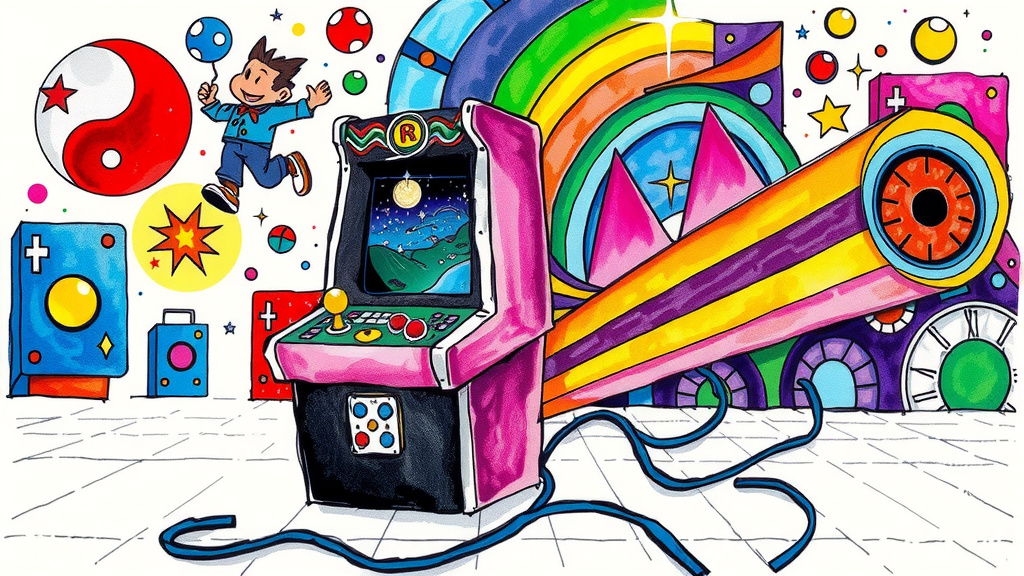
The Cultural Impact of Arcade Gaming in the ’80s
There’s something truly magical about the way arcade gaming shaped a whole generation. For many of us, the ’80s weren’t just defined by neon colors and big hair—they were defined by that unmistakable buzz of arcade machines lighting up our Saturday afternoons. Those cabinets glowed like treasures tucked away in malls or neighborhood corners, promising worlds of adventure one quarter at a time. If you were lucky, you’d show up with a pocket full of coins, ready to trade victories and stories with friends amid the rhythmic beeps and blips.
Growing up around these arcades meant so much more than just playing games. Those bright screens and pixelated heroes became the backdrop for friendships, rivalries, and memories that still bring a warm smile decades later. Let’s take a nostalgic stroll through the cultural heartbeat of the ’80s arcade scene and explore how these simple machines buzzed life into the social fabric of youth and beyond.
Power Ups and Pixelated Friendships The Social Pulse of Arcades
Arcades were far more than just places to plug in coins and mash buttons. Before social media, before smartphones, arcades were the original hangout spots where kids and teens gathered to connect, compete, and share. Back then, making friends often meant showing up early, mastering combos, and sharing secret tips for conquering the toughest levels. It wasn’t unusual to crowd around a single machine, cheering on a peer’s quest to beat a high score or trading strategies for the next game.
The social dynamics that emerged were fascinating—while some of us bonded over Pac-Man’s labyrinthine mazes, others reveled in the frantic joy of Donkey Kong. Rivalries sparked, but so did camaraderie; players who started as competitors often became lifelong friends. The arcade was a community, a place where identity was forged not through profile pictures but through joystick skills and arcade lingo. In many ways, these glowing cabinets served as the earliest social networks, bringing together a tribe of like-minded gamers before the internet era even began.
Blips Beeps and Big Dreams The Emotional Language of 8 Bit Soundtracks
One of the most hypnotic and instantly recognizable features of ’80s arcade games is their soundtracks. The simple, often repetitive beeps and chirps composed on limited hardware weren’t just background noise—they were emotional triggers, setting the pulse of the gameplay and embedding themselves deep in players’ memories.
Think about it: hearing that classic 8-bit melody can instantly transport you back to hours spent trying to conquer that pesky final boss or competing in late-night game marathons with friends. The music crafted entire emotional landscapes out of basic tones, turning pixel art into immersive experiences. Those soundtracks were the heartbeat of the arcade experience, influencing not just game design but also creeping into broader pop culture through radio jingles, TV shows, and even music samples decades later.
Coins Cartridges and CRT Glow The Tangible Magic of Old School Gaming Tech
There’s something deeply satisfying about that tactile exchange when feeding quarters into an arcade machine—the satisfying clank of coins dropping into slot, the flicker of CRT screens awakening from their dormant state. Unlike today’s instant digital downloads, old-school gaming was a ritual, one that demanded patience, anticipation, and a little bit of luck.
The physicality of arcades is hard to replicate in the modern gaming world. The feel of a joystick against your palm, the click of buttons perfectly tailored to each game, and even the faint scent of vinyl seats mixed with the buttery aroma of popcorn all add layers of sensory delight. These elements weren’t just accessories to gameplay—they became etched in memory, creating a vivid and permanent sense of place and time that today’s sleek, invisible digital interfaces often lack.
From Pixels to Pop Culture How 80s Arcades Shaped Our Shared World
The influence of ’80s arcade gaming stretched far beyond the physical cabinets themselves. Characters like Pac-Man and Donkey Kong became cultural icons, instantly recognizable figures that popped up in movies, cartoons, merchandise, and even music lyrics. The language of gaming crept into everyday conversations. Phrases like insert coin and 1UP filtered into slang and pop culture, creating a shared vocabulary among a generation.
Fashion also took cues from arcade aesthetics. Neon-colored graphic tees with pixelated characters and logos became staples, while the retro gaming revival continues to inspire designs today. The arcade era’s artistic style, from pixel art to chiptune music, laid the groundwork for much of the nostalgia-infused pop culture we see now. Even today’s indie games pay homage to the simplicity, challenge, and charm of those pixelated pioneers.
Press Start to Continue Living the Legacy Today
The ’80s arcade scene was more than just play—it was the starting point for a culture that persists in many forms today. The hours spent battling pixelated bosses still inform our appreciation for gaming’s simplicity, creativity, and community spirit. Whether as collectors hunting down vintage cabinets, fans rocking retro merch, or storytellers sharing memories, the DNA of those glowing machines continues to pulse through our lives.
Looking back, the arcades were a unique blend of technology, art, and social interaction that felt very human and tangible. That sense of wonder, shared struggle, and pure fun didn’t just fade with the rise of home consoles and online gaming. It lives on in every retro revival and every pixelated logo etched on T-shirts today. So next time you press start on a classic game or pop in a cartridge, remember you’re tapping into something timeless. One quarter at a time, that pixelated world still lights up our hearts.